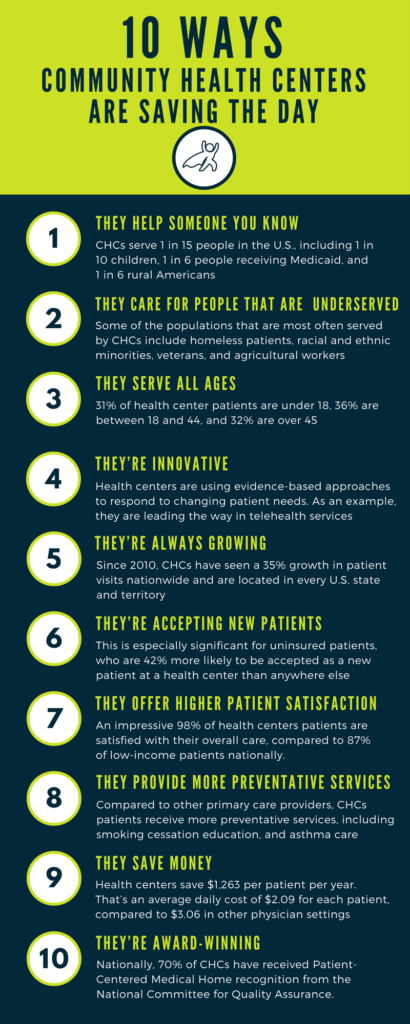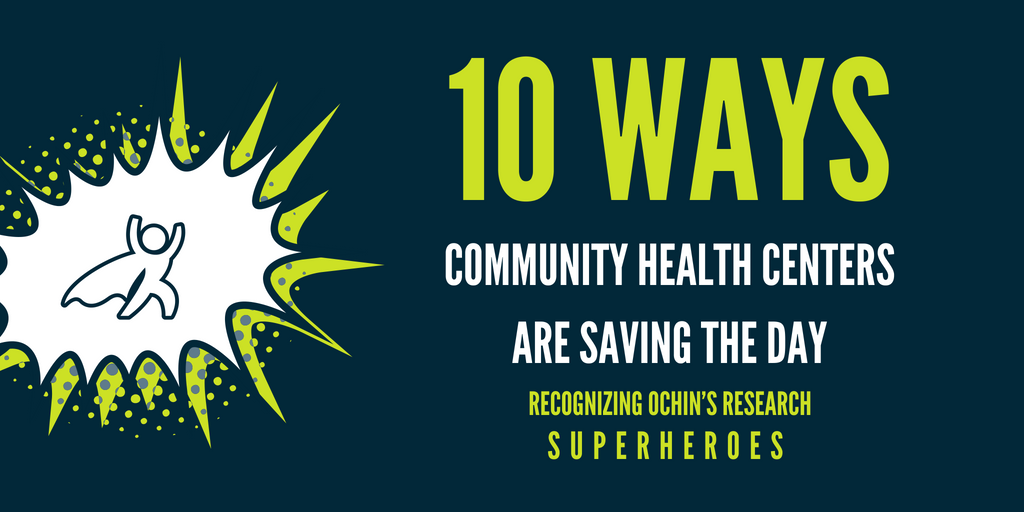August 12 to August 18 marks National Health Center Week 2018. Every day, community health centers (CHCs) serve 27 million Americans from all walks of life. Health centers like Fenway Health provide critical services to all people, regardless of economic background or insurance status. This year’s National Health Center Week theme, “Celebrating Health Centers: Home of America’s Health Care Heroes,” honors all the dedicated CHC employees that are saving the day for millions of people. Here are just ten ways that CHCs are truly super.
- They help someone you know. CHCs serve 1 in 15 people in the U.S., including 1 in 10 children, 1 in 6 people receiving Medicaid, 1 in 5 people who are uninsured, 1 in 6 rural Americans, and 1 in 3 people living below the poverty line.
- They care for people that are often underserved. Some of the populations that are most often served by CHCs include homeless patients, racial and ethnic minorities, veterans, agricultural workers, and people living in public housing.
- They serve all ages. 31% of health center patients are under 18, 36% are between 18 and 44, and 32% are over 45.
- They’re innovative. Health centers are using evidence-based approaches to respond to changing patient needs. To help battle the opioid crisis, health centers have doubled their behavioral health workforce since 2010 and are providing 10 times more substance use disorder screenings, interventions, and referrals. Health centers are also leading the way in connecting with hard to reach populations through telehealth services.
- They’re always growing. Since 2010, CHCs have seen a 35% growth in patient visits nationwide. In addition to medical services, most health centers offer behavioral health, dental, and vision services. CHCs are in located in every U.S. state and territory.
- They’re accepting new patients. CHCs are more likely to be accepting new patients than other providers. The difference is especially significant for uninsured patients, who are 42% more likely to be accepted as a new patient at a health center than anywhere else.
- They offer higher patient satisfaction. An impressive 98% of health centers patients are satisfied with their overall care, compared to 87% of low-income patients nationally.
- They provide more preventative services. Compared to other primary care providers, CHCs patients receive more preventative services, including smoking cessation education, asthma care, immunizations for adults over 65, and regular pap smears.
- They save money. Health centers save $1,263 per patient per year. That’s an average daily cost of $2.09 for each patient, compared to $3.06 in other physician settings.
- They’re award winning. Nationally, 70% of CHCs have been received Patient-Centered Medical Home recognition from the National Committee for Quality Assurance.

And if you think that’s super, through OCHIN research and the ADVANCE collaborative, CHCs are also helping to improve evidence-based practice and policy tailored to the needs of patients and providers in CHC settings. Members take part in research in a variety of ways – from EHR data sharing to surveys or interviews or an active role testing new tools, interventions, or processes to ensure their applicability and efficacy in CHC practice. Members ensure that this research stays firmly focused on the practical needs of CHC patients and care teams, equitable approaches to reduce health disparities, and improved outcomes for populations and communities served by member organizations.


